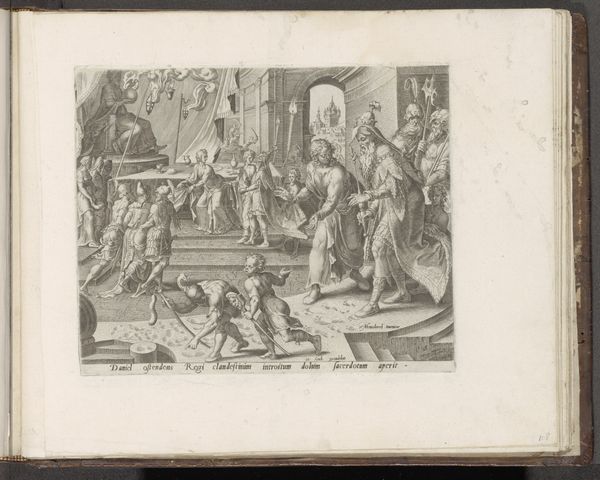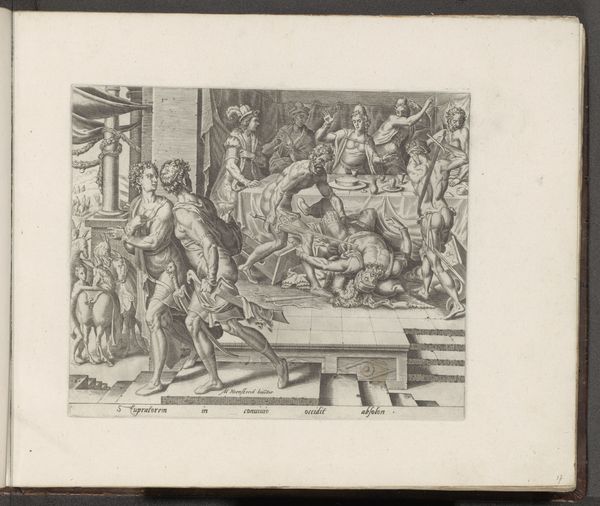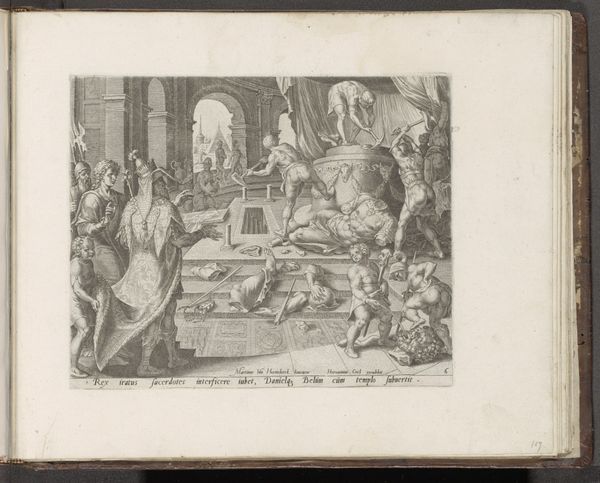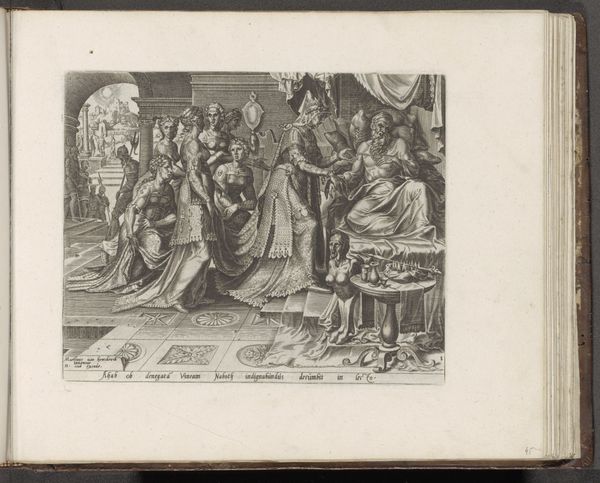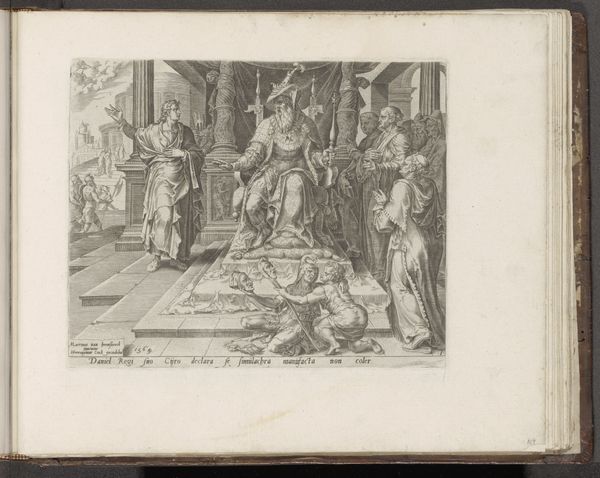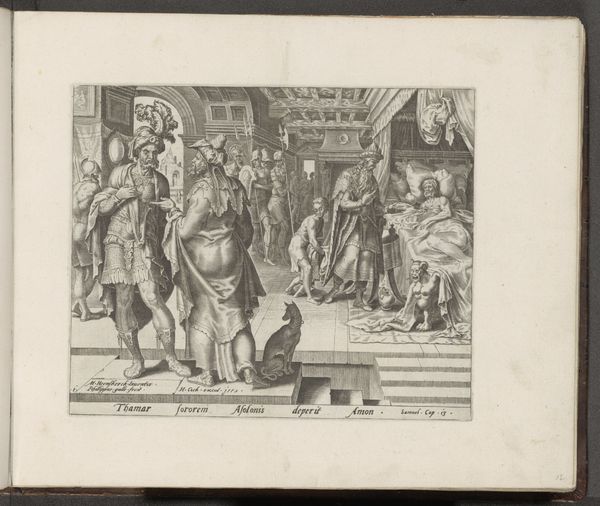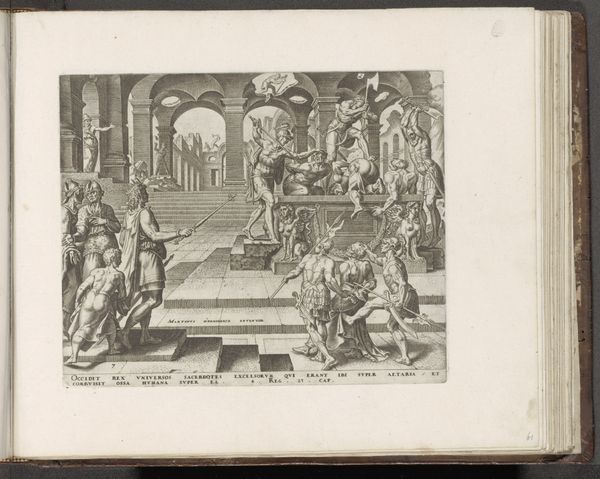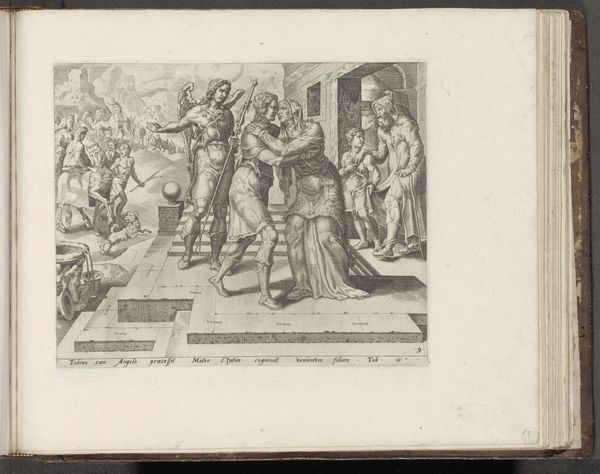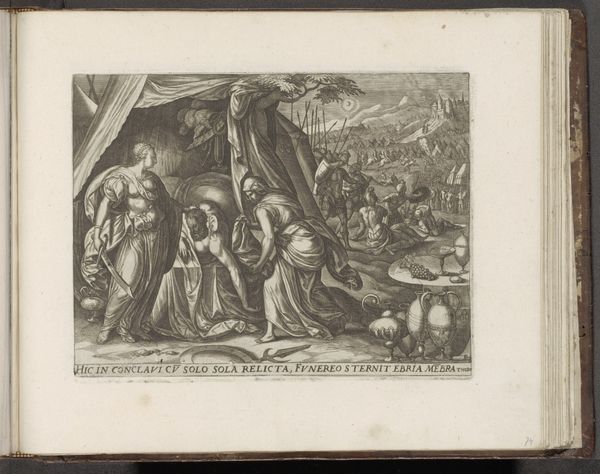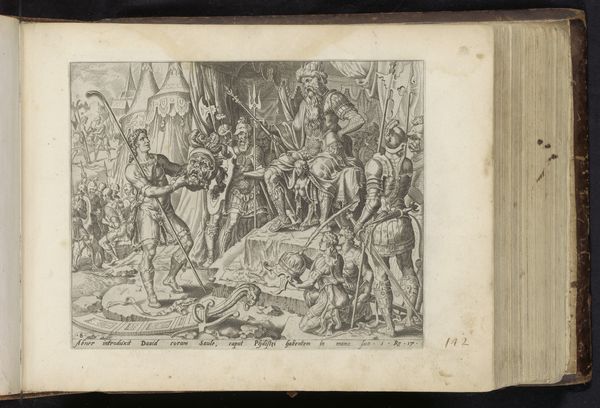
print, paper, engraving
#
narrative-art
#
ink paper printed
# print
#
mannerism
#
figuration
#
paper
#
line
#
history-painting
#
engraving
Dimensions: height 201 mm, width 249 mm
Copyright: Rijks Museum: Open Domain
Editor: This is Philips Galle’s “Daniel voedt de draak,” made between 1565 and 1579. It's an engraving printed on paper. There’s a lot going on in this scene. I'm immediately struck by how incredibly detailed it is, especially considering the medium. How do you interpret this work, considering the formal elements? Curator: Let's observe how the composition guides our reading of this print. Galle utilizes strong diagonals to create movement, leading the eye from the foreground dragon to the centrally staged figure of Daniel and then towards the receding background filled with figures. Note how the lines are not just descriptive, but also create areas of tonal contrast, emphasizing form and depth. Editor: It almost feels theatrical with the architecture in the background and the figures posed on different levels. It creates a feeling of staged drama. Curator: Precisely. And the architecture, though detailed, remains secondary. The line work gives form to figures with dramatically posed bodies that hold the pictorial space together, creating complex relationships. Consider how the rendering of each fold of drapery or curl of hair contributes to the overall surface tension. It seems that for Galle, subject matter primarily affords the means of engaging visual structures and exploring their aesthetic potentials. Editor: So it's less about what's happening in the image and more about how Galle constructed the image itself using lines, composition, and that sense of drama? Curator: The narrative exists, yes, but serves mainly as scaffolding. Notice that it doesn't strive for naturalism but prefers instead an intensified stylization that elevates artifice. The question then arises, to what ends does artifice lead our experience and thinking? Editor: I see it now. Thank you for illuminating the structure, contrast and relation between form and narrative! Curator: An intriguing experience to explore these structural complexities, isn’t it?
Comments
No comments
Be the first to comment and join the conversation on the ultimate creative platform.
